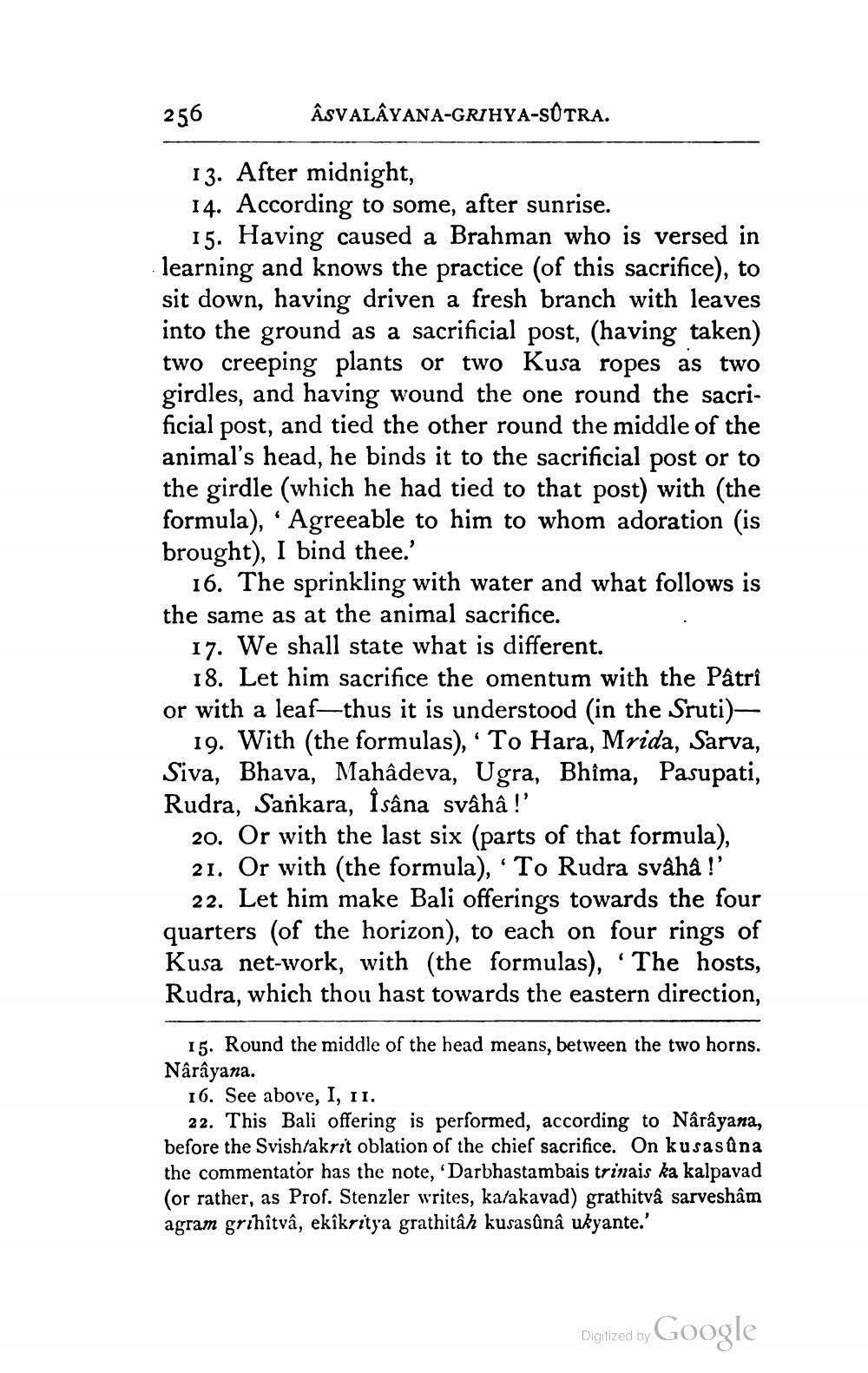________________
256
ÂSVALAYANA-GRIHYA-SUTRA.
13. After midnight, 14. According to some, after sunrise.
15. Having caused a Brahman who is versed in learning and knows the practice (of this sacrifice), to sit down, having driven a fresh branch with leaves into the ground as a sacrificial post, (having taken) two creeping plants or two Kusa ropes as two girdles, and having wound the one round the sacrificial post, and tied the other round the middle of the animal's head, he binds it to the sacrificial post or to the girdle (which he had tied to that post) with (the formula), ' Agreeable to him to whom adoration (is brought), I bind thee.'
16. The sprinkling with water and what follows is the same as at the animal sacrifice.
17. We shall state what is different.
18. Let him sacrifice the omentum with the Pâtri or with a leaf-thus it is understood (in the Sruti)
19. With the formulas),' To Hara, Mrida, Sarva, Siva, Bhava, Mahâdeva, Ugra, Bhima, Pasupati, Rudra, Sankara, Îsâna svâhâ !'
20. Or with the last six (parts of that formula), 21. Or with the formula), 'To Rudra svåhå!'
22. Let him make Bali offerings towards the four quarters (of the horizon), to each on four rings of Kusa net-work, with (the formulas), 'The hosts, Rudra, which thou hast towards the eastern direction,
15. Round the middle of the head means, between the two horns. Nârâyana.
16. See above, I, II.
22. This Bali offering is performed, according to Nârâyana, before the Svish/akrit oblation of the chief sacrifice. On kusasuna the commentator has the note, ‘Darbhastambais trinais ka kalpavad (or rather, as Prof. Stenzler writes, kalakavad) grathitva sarveshâm agram grihîtva, ekîkritya grathitâh kusasûnâ ukyante.'
Digitized by Google




